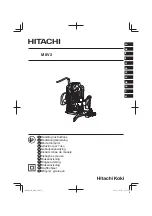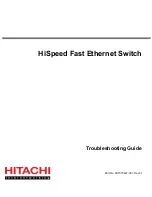
Section 311-610-20B
030-101522 Rev. C
9
0509IBRC
time-stamped entries for the most important types of events
such as loss of signal, power outages, PM registers cleared, alarm
detection, and more. Several different types of events are pos-
sible in the log as listed in the examples of Table 2. The
Event/Alarm Log will retain the 200 most recent events in non-
volatile memory. The Event/Alarm Log can be viewed locally via
the craft port or can be retrieved remotely via TL1 commands.
Message Type
Event/Alarm Log Message
SIGNAL STATE
LOS FROM CPE
LOS FROM CPE CLEARED
LOS FROM FAC
LOS FROM FAC CLEARED
AIS FROM FAC
AIS FROM FAC CLEARED
AIS FROM CPE
AIS FROM CPE CLEARED
RAI FROM CPE
RAI FROM CPE CLEARED
LOOPBACK
REMOTE LOOP UP
ACTIVITIES
MANUAL LOOP UP
REMOTE LOOP DOWN
MANUAL LOOP DOWN
TIMEOUT LOOP DOWN
ANY LOOP UP
ANY LOOP DOWN
NIU POWER
LOSS OF POWER
STATUS
POWER UP
MAINT. RESET
RESET PM REGISTERS
ACTIVITIES
RESET EVENT/ALARM LOG
CHANGE CIRCUIT ID
PROVISIONING OPTION CHANGE
PROVISIONING
SF FRAMING SET
ANOMALIES
ESF FRAMING SET
FRAMING LOSS
Table 2. Samples of Event/Alarm Log Messages
6.5
Performance Storage Registers
The unit maintains performance parameters, Status Register
events and PIRs for both directions of transmission in 15 minute,
hourly, and daily registers as shown in Table 3.
15 Minutes
1 Hour
1 Day
Current
Current
Current
Previous
Previous
Previous
95 Additional
23 Additional
88 Additional
24 Hours Total
25 Hours Total
90 Days Total
Table 3. PM Data Storage Periods
6.6
Historical Performance Monitoring & Retrieval
Historical (90 day) PM data is provided by the unit. In the idle
or non-looped state, the DS1 bit stream (SF or ESF circuits), in
both directions of transmission, is monitored for performance
statistics. The unit records and time stamps these performance
statistics in non-volatile memory for retrieval at a later time.
These performance statistics can be retrieved on demand from
the NIU in two ways: 1) locally, and on a non-intrusive basis, via
the front-panel craft interface port or 2) remotely, via TL1 com-
mands and responses in the ESF Data Link.
6.7
PM Retrieval, SF/ESF Circuits (Craft Port)
The 3116-10 provides a front-panel RS-232 connector for local
access of performance statistics data without placing the unit
into loopback. See Paragraph 7.1.2 and Figure 11.
6.8
PM Retrieval, SF/ESF Circuits (Intrusive)
6.8.1
To access historical performance information, the test
center (Hi-Cap or CO) first accesses the circuit on a split basis,
and places the NIU in loopback. If the circuit is SF, the test con-
troller must then reconfigure for ESF framing for the duration
of the session to allow commands and responses to be exchanged
with the NIU in the ESF Data Link of the intervening facility.
6.8.2
The procedure for customer ESF circuits is identical to
SF, except the test controller does not need to change the fram-
ing format during the test session.
6.9
PM Retrieval, ESF Circuits (Non-Intrusive)
6.9.1
If the Test Access Device (TAD) being used has the ca-
pability to gain splitting access only to the ESF Data Link,
performance statistics can be retrieved using TL1 commands
without affecting customer payload information. In this mode,
the unit will effectively perform a loopback" of the ESF Data
Link allowing messages to be interchanged with the test control-
ler.
6.9.2
Real-time PM reporting from both the facility and
CPE can be provided using one of two methods, SPRM (Supple-
mental Performance Report Messages) or NPRM (Network
Performance Report Messages). Both methods are similar in
structure but differ in content. Both methods also conform to
ANSI Specifications described in T1.403-1998. These message
formats are similar to ANSI T1.403-like PRMs (Performance
Report Messages) that are sent toward the network at 1-second
intervals via the ESF Data Link. The NPRM or SPRM messages
allow network equipment to determine if the T1 signal was in er-
ror before being sent to the customer. It also indicates if the T1
signal from the CPE contained errors before it enters the net-
work.
6.9.3
The TL1 commands conform to standard commands
such as RTRV-PM, INIT-REG, etc. The protocol is a modified
X.25 LAPB. A generalized diagram of this procedure is shown
in Figure 7.
7.
HARDWARE OPTIONS & FEATURES
The 3116-10 contains features and options located on the front
and side (PCB) panels, as described in the paragraphs below.
- NOTE -
Set any/all manual option switches prior to installing the unit.










































